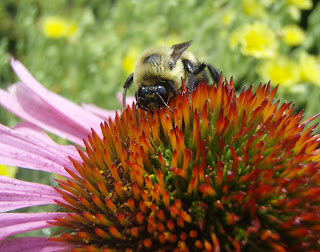
(Kale in late November)
I decided it was time to talk about the plants that are still surviving in our garden. This has been an above average November, so I'm sure things look better they would in other years. So far we have had most nights freezing, but only a few in the teens (F).
Above, the kale hasn't been phased yet by the cool weather. In fact, it is probably tasting it's best with nightly frosts.
Some common thyme we planted from seed seems to be alive above ground still. We will see if it can come back next year.

(Common thyme)
I was surprised this lavender plant was still alive. It didn't really get the best growing conditions and is very small. I will try to protect it and see if it will come back.

(Lavender Lady - Lavendula angustifolia)
The parsley always stays around into the late fall. This particular planting doesn't usually survive the winter, but our south side planting has come back this year and went to seed.

(Curled parsley)
Walking onions getting their last bit of sun before the winter sleep. I think next year we want to try some potato onions as well.

("Walking" onions)
Many leaves of strawberries are still hanging on. The plants on the north side have many red leaves -- a sure sign there have been hard frosts.

(Alpine strawberry)
Here are some parsnips we will leave in until spring. Also, in the lower right is a swiss chard that was a volunteer -- probably a dropped seed.

(Parsnips)
I have noticed a lot of seeds growing in this mild fall. I wonder how many will actually survive and how many were just fooled.

I like the fact that the heuchera never looses its color. Even with the leaves are dead and dried it will look like this.

(heuchera)
There are even a couple flowers still blooming. This viola waited until the canopy of dill died before spreading its own leaves. (Actually you might spot the dill seedlings in the photo.)

Not sure what these little flowers are, but they are hardy -- probably a weed in someone's book. For us it is in a wildflower bed.

We still have green grass, but the vegetable beds are ready for winter.

A number of plants are done for the winter like this rhubarb.

(Rhubarb)
A (late) Happy Thanksgiving to everyone.











































